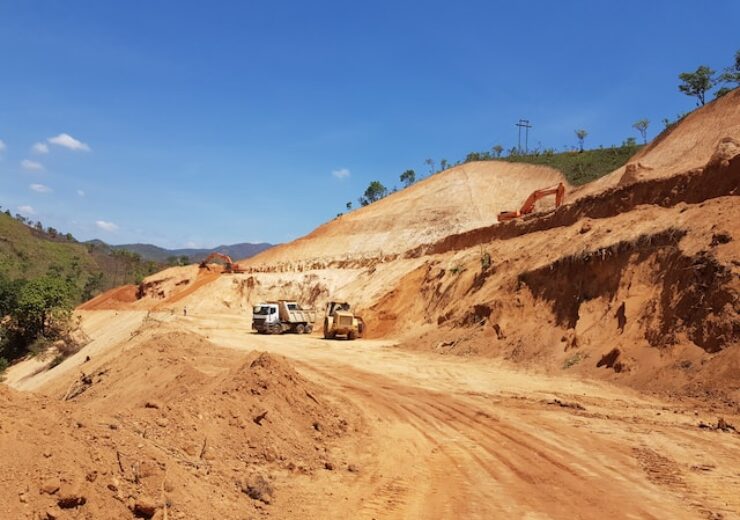After decades of dependence on diesel vehicles, these five factors are currently converging to expedite the transition towards battery-electric trucks and loaders within significant mining markets

Analysing regulatory factors that are driving electrification in mining. (Credit: Japhet Khendlo on Unsplash)
The mining sector is currently in the midst of a significant change towards adopting cleaner and more sustainable approaches. According to the International Council on Mining and Metals (ICMM), numerous major global mining corporations have now dedicated themselves to achieving the target of zero net direct and indirect carbon emissions by 2050.
In the face of the pressing requirement to address climate change and curtail carbon emissions, the momentum is building behind incorporating hydrogen fuel cell and battery-electric vehicles (BEVs) into mining activities. This shift holds the potential to not only diminish the mining sector’s ecological impact but also presents several operational benefits that cater to a wide range of stakeholders, spanning from operators to investors.
The Electric Mine conference, the sole global event exclusively focused on mine electrification, took place in Tucson, Arizona, in May of this year. Marking a novel development, the conference was extended to span three days in order to accommodate a packed itinerary. This featured numerous prominent mining corporations contending for panel discussions and breakout room speaking slots, all aimed at highlighting their electric initiatives.
By November 2022, GlobalData, a market intelligence company, had documented the presence of 65 electric mining trucks and 180 electric loaders/LHDs in operation worldwide. The largest combined concentration of electric LHDs and trucks was found in Canada (96), Russia (52), and the US (33).
In the months of April and May 2023, Mining-Technology.com conducted a survey that posed a question to participants regarding the timeframe they anticipated for the most substantial shift in mobile mining equipment transitioning from diesel to electric. Among the 348 mining firms surveyed, a quarter revealed they were already in the process of making the transition, while the most prominent group (34%) anticipated commencing this shift in the year 2030.
That asks the question, what are the key catalysts compelling mining companies to introduce electric fleets? And could it be solely driven by concerns about stricter regulations?
Samu Kukkonen, the Technology Director and Chief Engineer for Normet’s SmartDrive BEV technology, acknowledges that while regulatory concerns are indeed one factor, there are additional considerations at play.
He says: “The main driving forces for electrification in mining depend on the market region and the customer, but there are multiple factors that speak to different stakeholders,” he says.
Here are the five factors:
Safety of workers
The emissions produced by diesel vehicles pose a substantial hazard to the safety and health of underground mine workers. These emissions include elevated levels of particulate matter, nitrogen oxides (NOx), sulfur dioxide (SO2), and other detrimental pollutants. In the confined environment of underground mines, these emissions can amass rapidly, leading to the creation of perilous air quality circumstances.
Tiny particulate matter has the ability to infiltrate deep within the respiratory system, resulting in severe health concerns like lung impairment and respiratory ailments. Additionally, the elimination of the necessity for a fuel load in BEVs serves to decrease the potential for fires.
BEVs function in an almost noiseless manner in contrast to their diesel counterparts. Beyond simply curbing noise pollution, this lack of loud engine noise fosters improved communication and heightened situational awareness among miners. This more tranquil setting contributes to enhanced safety by enabling workers to readily discern warning signals, engage in effective communication, and detect potential dangers like falling debris or equipment issues.
Improved working environment
The diminished noise levels create a more agreeable and less demanding work setting, which positively impacts the general health and efficiency of the mining workforce.
Kukkonen says: “For the people operating the machinery, they really like the reduced noise and the emission-free atmosphere. They don’t have to breathe in fumes, and the temperature is much cooler. If you think about hot countries like Australia, this can really contribute to a kinder working environment.
“Further up in the mining organisation, people want to take care of their workers, and then there’s the benefit of being able to design the mine differently. There is an opportunity to reduce ventilation due to lack of heat and emissions. All the way up to financial and investment areas, which is very important to make electrification happen, stakeholders are seeing the benefits of BEVs.”
Incentives for carbon-capture
The mining sector has historically been linked to substantial carbon emissions due to its extensive usage of diesel-driven machinery, where mining vehicles alone contribute to around 30% to 50% of the overall direct greenhouse gas emissions at mining sites. The transition to BEVs aligns with worldwide endeavours to curtail greenhouse gas emissions and address climate change. BEVs boast emission-free tailpipes, effectively curbing the discharge of pollutants like nitrogen oxides (NOx) and particulate matter.
This development carries positive implications for both the environment and various stakeholders. As a component of the 2015 Paris Climate Agreement, numerous countries are implementing incentives for mines that decrease their carbon emissions, alongside the introduction of carbon taxes designed to discourage dependence on diesel fuel.
Streamlining mining operations globally
Apart from the environmental benefits, the integration of BEVs into mining operations presents numerous operational advantages. For instance, Normet’s SmartDrive BEV technology showcases a remarkable improvement of over 100% in uphill tramming speed, swift acceleration, up to 25% faster cycles, as well as swift charging capabilities and the potential to recover up to 50% of energy during downhill driving.
BEVs prove particularly advantageous for worldwide operations. The diverse engine mandates across different regions globally can render certain diesel engine tiers unfeasible in specific areas, whereas BEVs have the adaptability to function in any geographical location.
Cost efficiency in the long-term
Although the initial expense of BEVs might exceed that of diesel vehicles, the considerable cost advantages over the long run render them an appealing choice for mining companies. Electric vehicles offer reduced energy costs per mile in contrast to diesel, particularly in regions with substantial carbon taxes, leading to substantial savings throughout their operational lifespan.
While there was a minor increase in lithium-ion battery prices during 2022, costs have markedly decreased over the past ten years.
One notable cost-saving benefit of BEVs is the decreased requirement for ventilation. Mining operations can anticipate cost reductions concerning infrastructure for exhaust shafts, as well as the energy expended on ventilation equipment.
In the grand scheme, the shift toward adopting BEVs within the mining sector is unavoidable. The real consideration lies in the approach and timing of integrating electric vehicles into mining fleets. Explore further to understand how Normet and its innovative technology can assist mining enterprises in expediting the transition to high-performance BEV vehicles.

